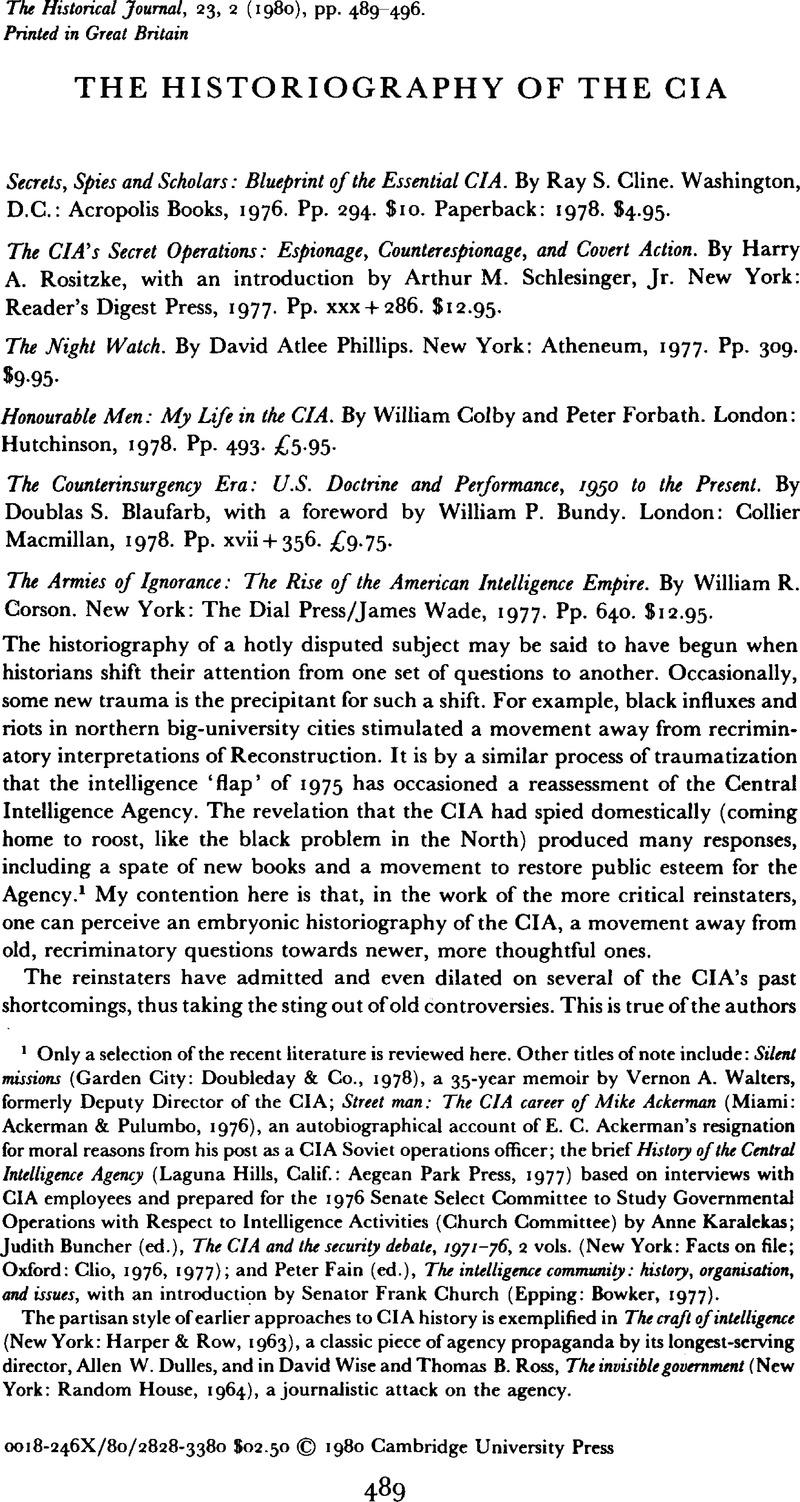Published online by Cambridge University Press: 11 February 2009

1 Only a selection of the recent literature is reviewed here. Other titles of note include: Silent missions (Garden City: Doubleday & Co., 1978), a 35-year memoir by Vernon A. Walters, formerly Deputy Director of the CIA; Street man: The CIA career of Mike Ackerman (Miami: Ackerman & Pulumbo, 1976), an autobiographical account of E. C. Ackerman’s resignation for moral reasons from his post as a CIA Soviet operations officer; the brief History of the Central Intelligence Agency (Laguna Hills, Calif: Aegean Park Press, 1977) based on interviews with CIA employees and prepared for the 1976 Senate Select Committee to Study Governmental Operations with Respect to Intelligence Activities (Church Committee) by Anne Karalekas; Judith Buncher (ed.), The CIA and the security debate, 1971–76, 2 vols. (New York: Facts on file; Oxford: Clio, 1976, 1977); and Peter Fain (ed.), The intelligence community: history, organisation, and issues, with an introduction by Senator Frank Church (Epping: Bowker, 1977).
The partisan style of earlier approaches to CIA history is exemplified in The craft of intelligence (New York: Harper & Row, 1963), a classic piece of agency propaganda by its longest-serving director, Allen W. Dulles, and in David Wise and Thomas B. Ross, The invisible government (New York: Random House, 1964), a journalistic attack on the agency.
2 There is a critical account of the role of U.S. military intelligence in the Philippines in Ralph H. Van Deman’s unpublished memoirs (n.d.), in the library of the U.S. Army intelligence center, Arizona. Van Deman is regarded by many as the father of modern American military intelligence.
3 Norodom, Sihanouk, My war with the CIA: The memoirs of Prince Norodom Sihanouk as related to Wilfred Burchett (Harmondsworth: Penguin, 1973), pp. 170 f.Google Scholar; Philip, Agee, Inside the company, CIA diary (Harmondsworth: Penguin, 1975), p. 562.Google Scholar
4 Recent CIA fiction by David Atlee Phillips and others is reviewed by Thomas R. Edwards in ‘Terror in Freedonia’, The New Tork Review of Books, xxvi (8 February, 1979), 34–6. Bruce, Merry’sAnatomy of the spy thriller (Dublin: Gill & Macmillan, 1977) contains an interesting but brief characterization of the American spy novel (pp. 31–42). Merry remarks that ‘the thriller writer is not mimetic: the narrative image rarely corresponds to the known and ascertainable facts about real-life spy networks and intelligence operations’ (p. 1). His book does not explore the relationship between ‘narrative image’ and popular beliefs about espionage.Google Scholar